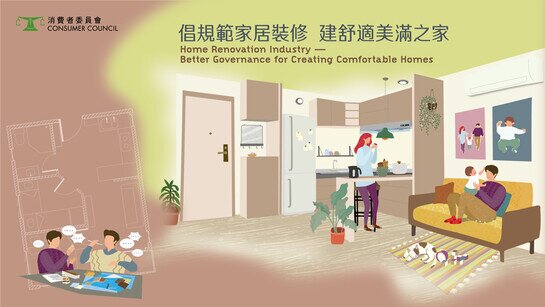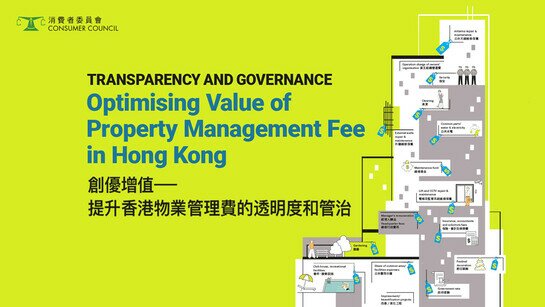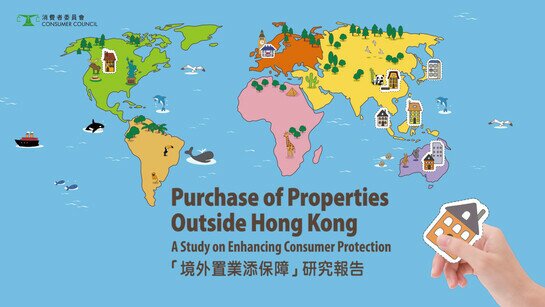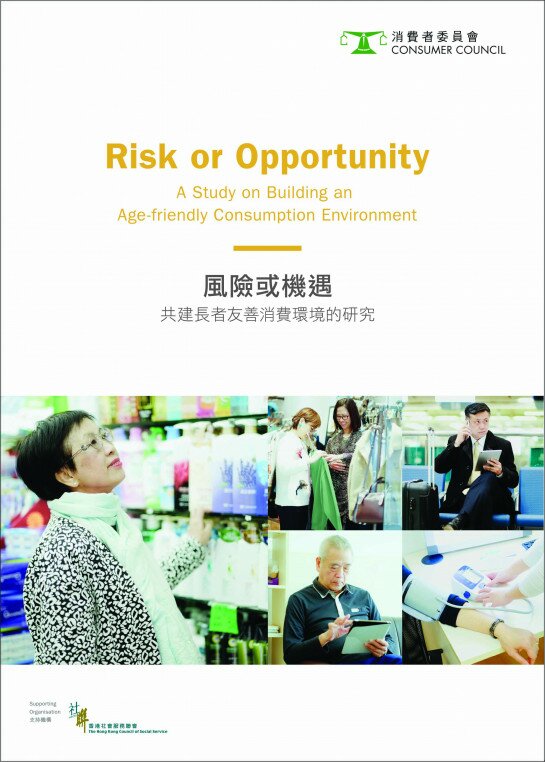Executive Summary
- Hong Kong has a shortage of parking spaces in residential developments. A study carried out by the Transport Department in 1995 1 identified an overall demand for 264,699 spaces and a supply of 239,000. The overall shortfall of 10% masked the fact that in some districts the percentage shortfall was much higher. Table 2, which appears on page 9 gives the breakdown for individual districts.
- Growing affluence and the increasing affordability of cars suggest that the demand for car parking space will continue to grow. The Consumer Council has looked at the protection given to users of car parking spaces in private residential developments and has concluded that it needs improvement. In this report the Council analyses the problems that users have experienced and recommends steps that it believes will give users greater protection and ensure that the market operates more fairly.
- Not surprisingly, in a market where supply is limited by geographical and planning constraints, complaints arise over the way in which car parking spaces are allocated, priced and administered. In 1990, the public’s attention was drawn to the strong protest of residents concerning the way parking spaces at Beacon Heights Estate were sold to a third party rather than to residents. In 1994, residents in 16 developments complained about hefty increases in monthly charges, which averaged 33%, and in one case was as high as 57%.
- From our studies we have identified five problems that persistently give rise to complaints. They are:
- large increases in the cost of purchasing car parking spaces;
- steep increases in monthly parking charges;
- the sale or leasing of car parking spaces to non-residents;
- speculation in car parking spaces; and
- breaches of conditions on the use of car parking spaces.
- In its examination of the issues the Council has identified six factors that have contributed significantly to the problems described above. They are:
- growth of private car ownership;
- restraints on the provision of private car parking spaces;
- lack of statutory rent and tenure protection;
- disposal of car parking spaces to non-residents;
- lack of enforcement of conditions on use; and
- limited disclosure of information
- The first of these factors is, for the purposes of this report, accepted as beyond the scope of the Council's recommendations. However, the Council supports the view expressed in Hong Kong Planning Standards and Guidelines, 1992 edition, issued by the Planning Department, that except in special cases future residential developments should have sufficient parking provision to match the current and anticipated car ownership of residents and that car ownership should not be restrained through restrictions on the provision of parking spaces.
- The Council has, however, come to the conclusion that a holistic view needs to be taken in order to address the problems which exist in the market. Moreover, our study of the clauses included by the Government in Land Grants and similar documents shows clearly that it is government’s objective to give priority in the use of car parking spaces to residents, but this intention is not being realised.
- In 1995 the Council discussed a series of recommendations with Government and other interested parties. Some recommendations concerned changes that have since been made and some remain under discussion. However, recent events in relation to the South Horizons development and the Provident Centre, which are described in chapter 2 , pointed up the need to improve the sale and lease of carparks and to publish the recommendations in order to encourage wider discussion.
Recommendation 1:
- Improvement in the terms of land grant: The Lands Department already requires in land grants that only vehicles belonging to residents or occupiers or their visitors may use the car parking spaces.This clearly demonstrates that residence and the right to occupy parking spaces are linked but, as past experience shows, concentration only on the right to occupy is not sufficient. We believe that the Government should take a further step and spell out in future Land Grants in any residential development that:
- only the owners of undivided shares who have the right to exclusive occupation of residential flats may buy those car parking spaces which are intended for the use of residents of the developments;
- only owners and/or residents may rent such parking spaces if they are not for sale; and
- developers might apply to the Lands Department for permission to sell such car parking spaces to non-residents only when they (the developers) could prove to the satisfaction of the authority that the supplies of such spaces are genuinely excessive.
- The Grant should also require that these conditions are brought to the attention of prospective purchasers of flats and parking spaces by requiring that the sales and purchase agreements of the units and parking spaces must include such conditions mentioned above.
- In proposing the above mentioned requirements, the Council has considered the following concerns raised by some parties:
- the proposed requirements interfere the free disposal rights of the developers;
- developers would be discouraged to provide adequate car parking spaces; and
- the inflexibility of the requirements renders the inefficiency usage of private car parking spaces which are already in shortage.
- The Council does not find the arguments for the first two concerns raised above persuasive. In fact, the Council*s proposal does no more than to ensure the existing Government policy, to provide car parking spaces for the use of residents, will be applied more effectively.
- The Council recognizes that the provision of car parking spaces is a commercial decision for the developer to make within the parameters laid down by the Planning Department.
- On the other hand, the Council considers it necessary to address the rare cases where a developer provides more spaces than residents require. The Council considers it desirable to allow developers to sell or let some spaces to non-residents on condition that developers must apply to the Lands Department to vary the requirements of the Land Grants by proving that the supplies of car parking spaces in their developments are genuinely excessive.
Recommendation 2:
- Introducing Statutory Rent and Tenure Protection: At present the provisions of the Landlord and Tenant (Consolidation) Ordinance apply to car parking spaces let as a package with a residential unit but not when they are let separately. In order to address the lack of security of tenure or controls on charges for those who rent parking spaces separately, certain provisions relating to *domestic premises* and *domestic tenancy* under the Landlord and Tenant (Consolidation) Ordinance should be amended to provide some forms of statutory protection e.g. notice period, first right to purchase, in respect of private car parking spaces for residents* use in domestic buildings, whether use is granted through tenancy agreements, contractual licences or any other arrangement of a similar nature.
- The Council recognises that extending protection to spaces occupied under licences is a new step, but because so many car parking spaces are occupied under licences, rather than by way of a tenancy agreement, that protection will not be effective unless these other forms of occupation are included. The Council recognises that not all the protections granted under the Ordinance in respect of residences will be appropriate for car parking spaces. It is for Government to decide which protections may safely be extended to achieve the objective of providing some level of security of tenure for parking space users.
Recommendation 3:
- Empowering Management or Incorporated Owners to Enforce Conditions on the use of the Parking Spaces:In order to overcome the practical barriers that exist at the moment in respect of the enforcement of conditions on the use of car parking spaces,
- the DMC of all new developments should include provisions relating to the conditions on the use of car parking spaces and enabling the manager or Incorporated Owners to take action in the case of breach; and
- the Building Management Ordinance should be amended to put beyond doubt the ability of Incorporated Owners to enforce the conditions on the use of parking spaces.
Recommendation 4:
- Disclosure in Respect of Disposal of Car Parking Spaces:a requirement for disclosure of the number of spaces to be sold and to be rented should be included in Land Grants, Building Covenants and Pre-sale Consent Conditions.
- The disclosure requirements at the time of disposal should include details of parking spaces, including information on size, location and price. For spaces in uncompleted developments, in line with Lands Department’s requirement for pre-sale of units under Consent Schemes, information on size and location of the parking spaces available for sale should be published 7 days ahead of the date of sale and information on price 3 days ahead when spaces are pre-sold.
- A longer period of notice should be given when a decision is taken to sell spaces that were previously rented out, to avoid the need for residents, who may not have been considering the purchase of a parking space, to make an important decision under pressure. The information required to be disclosed on location, size and price, should be the same as for spaces in uncompleted developments.
Recommendation 5:
- Creation of a Code of Practice for Developers to include Car Parking Spaces: developers should endeavour to provide accurate information to consumers and to adopt the best practice. The Consumer Council considers it desirable for the Real Estate Developers Association of Hong Kong to devise a code of practice in respect of sales of residential property which should extend to the sale and management of car parking spaces.
- These recommendations are made to set out the important principles that should be reflected when changes in legislation and contracts are made. The precise detail of the changes is best addressed in the light of subsequent discussion.
- Finally, the Council suggests that the Government should look at the feasibility and the acceptability to both public and developers of having car parks held in trust by management or Incorporated Owners for the benefit of all residents. The Council can see arguments both for and against this proposal and believes the question would benefit from informed debate.
Notes:
1. Parking Demand Study, the Transport Department, December 1995.
Table 2: 1994 Private Car Parking Space Demand and Supply
| District | Domestic Facilities | ||
|---|---|---|---|
| Parking Space Demand (a) | Parking Space Supply (b) | Domestic Surplus/Shortage (a)-(b) | |
| Central & Western | 19,918 | 19,072 | -846 |
| Eastern | 32,819 | 21,266 | -11,553 |
| Kowloon City | 21,856 | 24,899 | 3,043 |
| Kwai Tsing | 12,222 | 13,040 | 818 |
| Kwun Tong | 15,493 | 15,900 | 407 |
| North | 6,433 | 7,104 | 671 |
| Sai Kung | 8,055 | 7,177 | -878 |
| Sha Tin | 27,440 | 27,053 | 63 |
| Sham Shui Po | 12,825 | 9,670 | -3,155 |
| Southern | 21,348 | 19,227 | -2,121 |
| Tai Po | 11,124 | 9,981 | -1,143 |
| Tsuen Wan | 10,723 | 9,285 | -1,438 |
| Tuen Mun | 17,299 | 20,784 | 3,485 |
| Wan Chai | 15,456 | 15,942 | 486 |
| Wong Tai Sin | 7,244 | 9,040 | 1,796 |
| Yau Tsim Mong | 8,982 | 3,486 | -5,496 |
| Yuen Long | 15,462 | 5,624 | -9,838 |
| Total | 264,699 | 239,000 | -25,699 |
Source: Parking Demand Study, theTransport Department, December 1995.
Complaint Figures of Private Residential Carparks
| No. of Complaints received** | |||||
|---|---|---|---|---|---|
| Nature of Complaint | 1994 | 1995 | 1996 | 1-7/1997 | Total |
| Sales Tactics(销售手法)# | 4 | 6 | 4 | 112 | 126 |
| Excessive Increase of Rental(租金大幅增加) | 16 | 5 | 1 | 2 | 24 |
| Management(管理) | 3 | 5 | 4 | 0 | 12 |
| TOTAL | 23 | 16 | 9 | 114 | 162 |
| No. of Developments Involved | 23 | 15 | 9 | 5 | 43 |
#Sales tactics refer to:
I. Insufficient notice to consumer for purchase of carpark.
II. not offering opportunity for tenants to purchase carpark.
III. bulk sales to another company.
IV. inaccurate information regarding use/size of carpark.
**One complaint may involve a substantial number of individuals from the same development.












